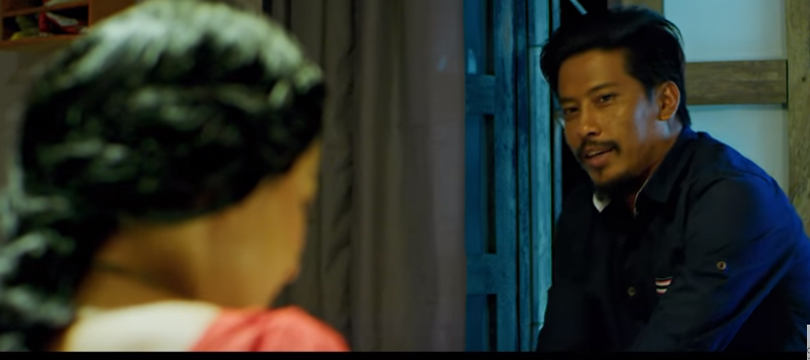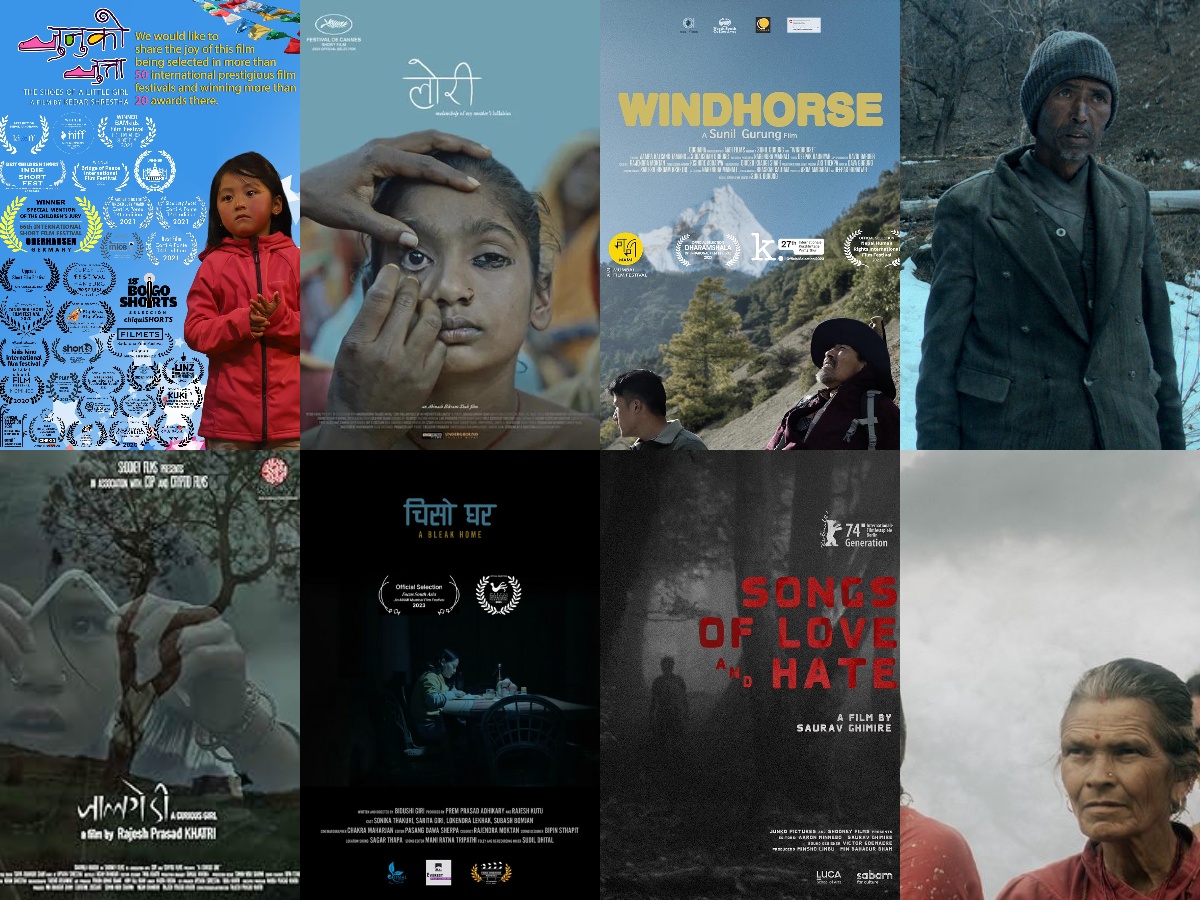
This week’s release Prasad will answer you why the screenplay and its presentation are equally important in a commercial film.
The powerful story is filled with visual and auditory symbols picked from daily life of the people in society. Its cinematic performance well suits the depth and richness of the story. Polished acting of lead actors add to its strength though few minor shortcomings are also evident.
Skilled weaving of events
Perhaps the biggest turn-on of the movie for its audience is its realistic story. The characters of the movie are common people of the Nepali society. Their concerns are known to most members of the audience group. It has let the movie connect its story with the life story of its viewers.
The story is unified into a single thread. It does not include any scene that is not connected to the overall plot and the intended message. The writer has inserted meanings in very minor scenes too. In general, no scene is wasted. Everything is neatly knitted together.
For example, as the hero’s father talks about the poor phone network in his village in the first half, the viewers are likely to feel that it is just a lame excuse to keep the conversation going. However, it does not take many minutes for them to realise that weak phone network has a great role in the climax of the movie.
The movie is rich in the use of visual and auditory symbols. As suggested by theories of powerful fiction, certain images repeat to elevate themselves to the height of metaphoric symbols whereas some parallel images are juxtaposed. When the heroine visits the hero at his workplace with a tiffin box, the audience members are not likely to connect it with any higher value for the first time. But, when the movie repeats it for the second and third times, it symbolically represents the emotional bond the couple share in the strange land. In the same manner, rain and storm symbolise the heroine’s fear in the movie.
The hero’s and the villain’s family life are presented one after another at crucial times. Likewise, there is parallelism between solitary moments of sobbing of the hero and the heroine. They invite the viewers to think about the differences and form their attitude about the characters.
The relationship between the hero and the villain is interesting. Multiple tension points have been created in their journey, which ultimately results in a dramatic irony soon before the movie reaches its climax. Resolving this irony leads the hero to a startling revelation at the climax.
Unlike many recent productions, the story is structured in the chronological order. Few flashbacks are used, but they do not reveal anything that the audience members have not known. It is a proof that even a plain linear weaving of events can hold the intensity of complex emotions associated with the events.
The viewers do not know whether the end is tragic or comic till few minutes before the fall of curtains. It makes the audience keep on waiting, curious and restless.
Overall, journalist-turned-writer Sushil Paudel has created a praiseworthy impression in his debut project.
Impressive cinematography
The screenwriter’s competence is well supported by the director’s artistic handling of the scenes. Dinesh Raut and his team have created a realistic impression in the movie. Whereas the selection of locations is justifiable, the movie also presents slices of culture and tradition of those places.
Lead artistes have internalised their roles. Bipin Karki and Namrata Shrestha have presented themselves as honest members of the rural Nepali society. Their faces reflect purity and innocence. The movie is evident of Karki’s versatility whereas the viewers while watching the movie forget that Shrestha in reality is an urban girl who inserts at least one English word in every sentence.

Nischal Basnet has contributed his distant gesture, cold facial expression and thoughtfully articulated dialogues to his projection as a conspirator. His dialogue delivery is not as smooth and easy Karki and Shrestha. However, this unevenness is also indicative of his cunning role.
This production’s sound work is noticeable as most Nepali movies overlook this aspect. To show morning times, the director has made a radio set play hymns in the background. The same radio plays Teej songs when the heroine welcomes the hero, wasted and almost unconscious, on the auspicious day.
Room for improvement
While the director concentrated his efforts on major characters, artists doing minor roles (for example, both of the employers of the hero and a lady coworker of the heroine) have failed to maintain the standard. They speak long and artificial sentences frequently.
Meanwhile, the camerawork is average. Whereas close-up shots are used appropriately, the first few minutes are filled with longer than necessary wide shots. They show serpentine rural roads full of dust, and fail to appeal. Likewise, the camera fails to hide the artificial hair of Shrestha.
The first half seems forcefully stretched. It has tried to cover many problems in few minutes. The audience members get familiar with difficulties in searching rooms to rent, and problems created by caste differences. Some of such issues could have been dropped to make the movie more compact.
In the first hour of the movie, multiple references are made to the couple’s desire for children. While it undoubtedly is the central theme of the movie, some references seem forcefully inserted.
The beginning is average and it lacks something that catches the audience attention at once. However, the plot is intriguing and it recovers the possible loss.
Verdict
Go watch the movie if you want to learn what a proper balance between an interesting story and its artistic presentation looks like. Prasad will not disappoint anyone.
Its market performance is a different issue though.
—
Prasad
Screenwriter: Sushil Paudel
Director: Dinesh Raut
Cast: Namrata Shrestha, Bipin Karki, Nischal Basnet, Basundhara Bhusal, Binod Bhattarai, Prakash Gandarba
Genre: Love story, family drama
Runtime: 135 minutes
3/5


























